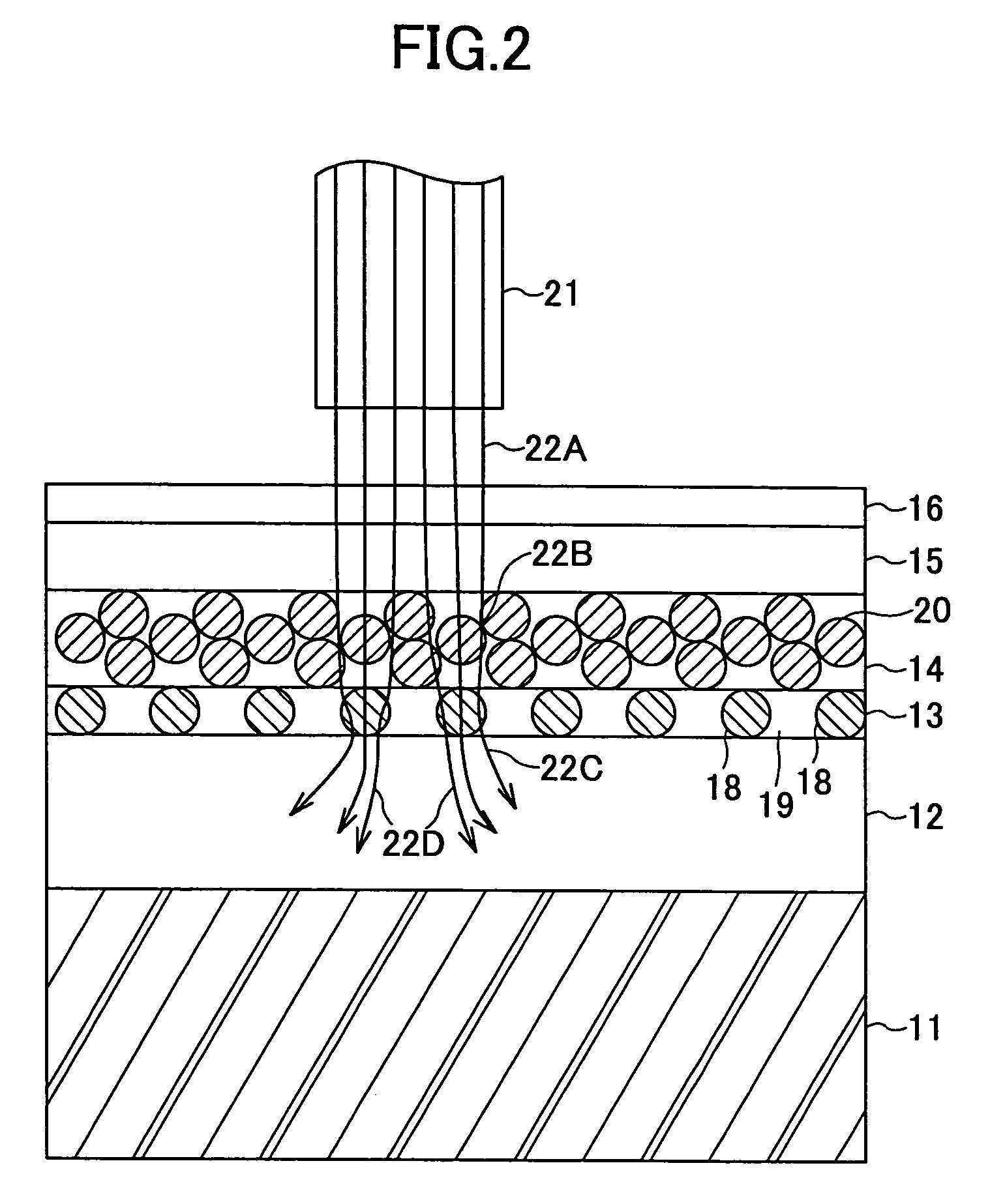Magnetic recording medium, method of producing magnetic recording medium and magnetic storage apparatus
a technology of magnetic recording media and magnetic recording medium, which is applied in the direction of magnetic bodies, electric/magnetic/electromagnetic heating, instruments, etc., can solve the problems of affecting the stability of the magnetic recording medium, affecting the orientation of the recording, and affecting the stability of the recording medium. , to achieve the effect of improving the orientation, high-density recording, and convenient recording
- Summary
- Abstract
- Description
- Claims
- Application Information
AI Technical Summary
Benefits of technology
Problems solved by technology
Method used
Image
Examples
first embodiment
[0033]FIG. 1 is a cross sectional view generally showing a magnetic recording medium according to the present invention. A perpendicular magnetic recording medium 10 shown in FIG. 1 includes a substrate 11, a soft magnetic back layer 12, an intermediate layer 13, a recording layer 14 made of hard magnetic nano-particles 20, a protection layer 15 and a lubricant layer 16 which are successively stacked in this order.
[0034]For example, in the substrate 11, there are a crystalline glass substrate, a reinforced glass substrate, a silicon (Si) substrate, a heat-resistant film such as a polyamide film or the like.
[0035]For example, the soft magnetic back layer 12 has a thickness of 50 nm to 2 μm, and is made of an amorphous or microcrystalline alloy including at least one element selected from a group consisting of Fe, Co, Ni, Al, Si, Ta, Ti, Zr, Hf, V, Nb, C and B. The soft magnetic back layer 12 may be made of a stacked structure having a plurality of layers made of such an alloy and sta...
second embodiment
[0096]FIG. 7 is a flow chart for explaining the crystal ordering process of the method of producing the magnetic recording medium according to the present invention.
[0097]First, a step S100 shown in FIG. 7 forms a nano-particle carrier. More particularly, water-soluble salt is added to an organic solvent, such as hexane, in which nano-particles are dispersed, in a flask, and agitated. The flask is left in a shelf for approximately 30 minutes. As a result, the nano-particle carrier having the nano-particles adhered on the surface of the water-soluble salt is formed. The water-soluble salt is not limited to a specific salt. However, anhydrous salt obtained by dehydrating crystal water from crystal water salt (hydrated salt), such as MgSO4 obtained by dehydrating crystal water from MgSO4.7H2O (magnesium sulfate 7-hydrate), is preferable in that the surface energy is high and the nano-particles easily adhere. Sulfates of MgSO4, Na2SO4, PdSO4, (NH4)2MgSO4(III), Ce(III)SO4, NiSO4, CdSO4 o...
PUM
| Property | Measurement | Unit |
|---|---|---|
| Temperature | aaaaa | aaaaa |
| Temperature | aaaaa | aaaaa |
| Temperature | aaaaa | aaaaa |
Abstract
Description
Claims
Application Information
 Login to View More
Login to View More - R&D
- Intellectual Property
- Life Sciences
- Materials
- Tech Scout
- Unparalleled Data Quality
- Higher Quality Content
- 60% Fewer Hallucinations
Browse by: Latest US Patents, China's latest patents, Technical Efficacy Thesaurus, Application Domain, Technology Topic, Popular Technical Reports.
© 2025 PatSnap. All rights reserved.Legal|Privacy policy|Modern Slavery Act Transparency Statement|Sitemap|About US| Contact US: help@patsnap.com



